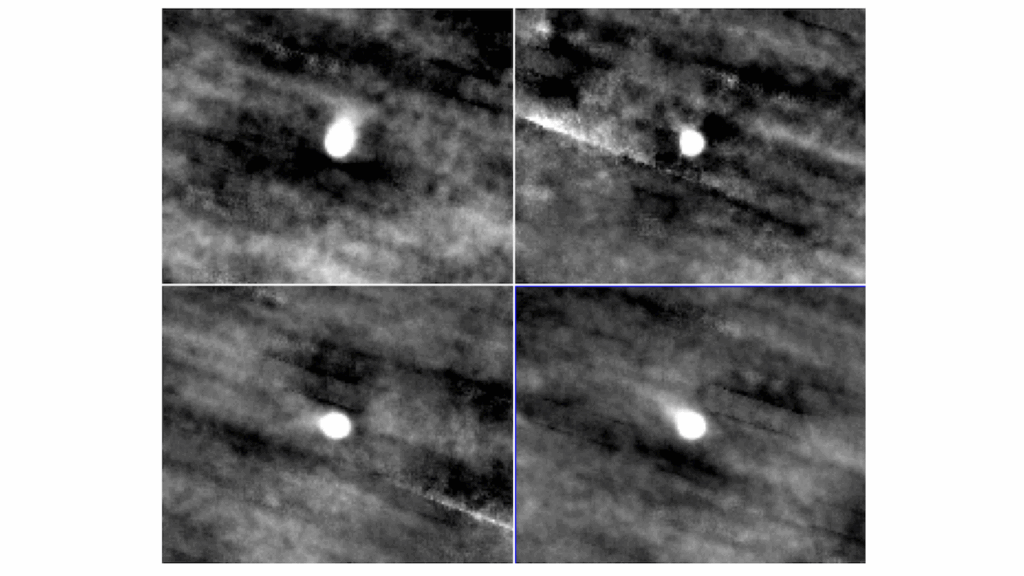Discovery Of The Elusive Carbonic Acid (HOCOOH) In Space

After a quarter century since the detection of the last interstellar carboxylic acid, acetic acid (CH3COOH), we report the discovery of a new one, the cis-trans form of carbonic acid (HOCOOH), toward the Galactic Center molecular cloud G+0.693-0.027.
HOCOOH stands as the first interstellar molecule containing three oxygen atoms and also the third carboxylic acid detected so far in the interstellar medium. Albeit the limited available laboratory measurements (up to 65 GHz), we have also identified several pairs of unblended lines directly in the astronomical data (between 75-120 GHz), which allowed us to slightly improve the set of spectroscopic constants.
We derive a column density for cis-trans HOCOOH of N = (6.4 ± 0.4) × 1012 cm−2 , which yields an abundance with respect to molecular H2 of 4.7 × 10−11. Meanwhile, the extremely low dipole moment (about fifteen times lower) of the lower-energy conformer, cis-cis HOCOOH, precludes its detection. We obtain an upper limit to its abundance with respect to H2 of ≤ 1.2 ×10−9 , which suggests that cis-cis HOCOOH might be fairly abundant in interstellar space, although it is nearly undetectable by radio astronomical observations.
We derive a cis-cis/cis-trans ratio ≤ 25, consistent with the smaller energy difference between both conformers compared with the relative stability of trans- and cis-formic acid (HCOOH).
Finally, we compare the abundance of these acids in different astronomical environments, further suggesting a relationship between the chemical content found in the interstellar medium and the chemical composition of the minor bodies of the Solar System, which could be inherited during the star formation process.
Miguel Sanz-Novo, Víctor M. Rivilla, Izaskun Jiménez-Serra, Jesús Martín-Pintado, Laura Colzi, Shaoshan Zeng, Andrés Megías, Álvaro López-Gallifa, Antonio Martínez-Henares, Sarah Massalkhi, Belén Tercero, Pablo de Vicente, Sergio Martín, David San Andrés, Miguel A. Requena-Torres
Comments: Accepted for publication in The Astrophysical Journal
Subjects: Astrophysics of Galaxies (astro-ph.GA)
Cite as: arXiv:2307.08644 [astro-ph.GA] (or arXiv:2307.08644v1 [astro-ph.GA] for this version)
Submission history
From: Miguel Sanz-Novo
[v1] Mon, 17 Jul 2023 16:57:51 UTC (3,205 KB)
https://arxiv.org/abs/2307.08644
Astrobiology, Astrochemistry








